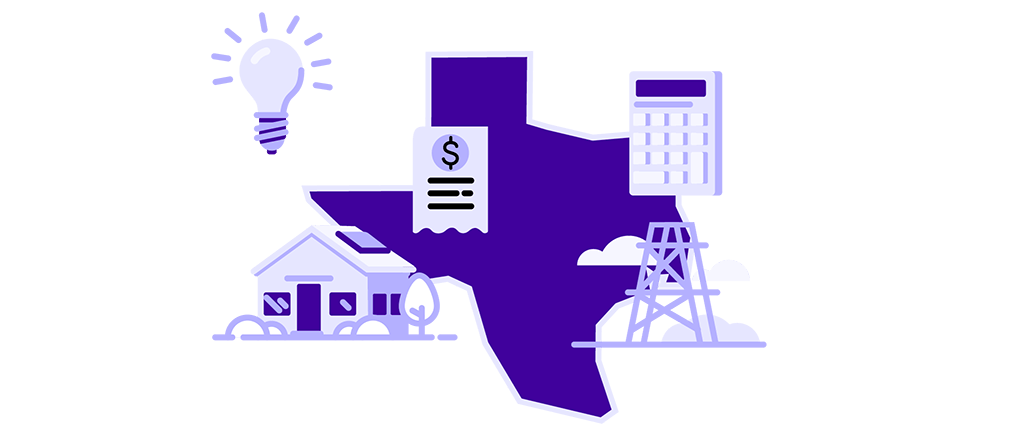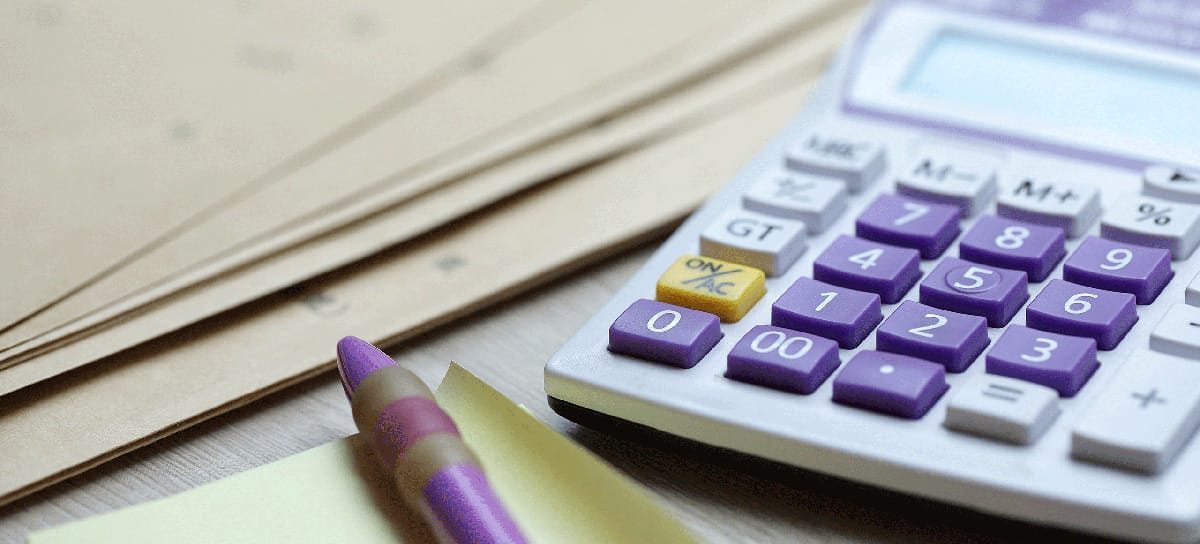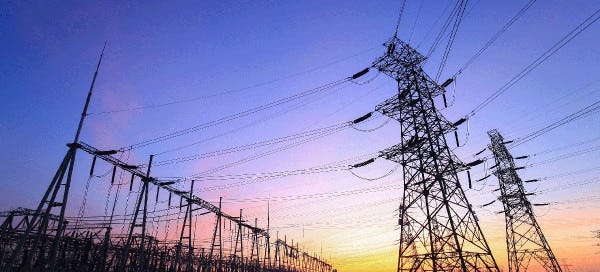When the weather is hot and the air conditioner is chugging to keep up – whether you live in a muggy or dry part of our state – it’s easy to understand why your home consumes a great deal of electricity. But there are other major draws on your energy usage, including appliances, water heating, and more.
This energy consumption is measured in kilowatt-hours (kWh), which represents the amount of energy used over time. In other words, if you have a 1 kW appliance running for one hour, it would use 1 kWh of electricity. Your electric bill calculates the total kWh used during a billing cycle, so the more you use, the more you pay.
According to the U.S. Energy Information Administration, in Texas households the average monthly electricity use is around 1,094 kWh, or 36 kWh of energy each day. This is significantly higher than the national average, which is 886 kWh per month..
Comparison of Texas Averages with National Averages
So how do these Texas monthly averages compare with those of other parts of the country? In Texas, energy usage is higher.
California | 542 kWh |
New York | 599 kWh |
Illinois | 728 kWh |
Texas | 1,094 kWh |
Average kWh by Major Texas City
Averages also vary from region to region in Texas, and also from city to city.
For instance, in Houston residents are dealing not only with heat, but also with high levels of humidity. That’s one reason that homes in the area have high energy usage. Based on data from the Electric Reliability Council of Texas (ERCOT), the average home in Houston consumes around 1,300 kWh every month. With an average rate in July of 2024 of 18.55 cents per kWh, the average monthly electric bill for Houstonians is $241.15.
In Dallas, with its milder climate, costs are lower. The average home there uses around 937 kWh per month. At an average rate of 18.55 cents per kWh, bills in Dallas average $173.81.
And in Austin, residents spend around $219 every month on electricity. This is based on an average use of 1,530 kWh per month at a rate of 14 cents per kWh.
Average kWh Usage Based on Home Size
One of the major factors determining how much energy your home will use is its size. The median home size in the Lone Star State is 2,170 square feet; taking the 1,094 kWh per month average above, that works out to around 0.504 kWh per square foot, per month.
To estimate your monthly usage based on home size, multiple the total square footage of your home by 0.504. So how much electricity does a 2,000 square foot home require? Around 1,008 kWh per month.
That said, there are many other factors in play, including home insulation and efficiency of appliances. We’ll dive more into those in a moment, but this math should give you a good rough estimate.
Other Factors Affecting Energy Usage
The number of residents in a home also impacts its energy usage. As does whether any of the residents work from home, and so use more energy during the day.
Another consideration is the age of your home. More recently built homes tend to have modern insulation, which is better at retaining the warm or cool air in your home without letting it escape through walls, windows, or the attic. They also tend to have updated, energy-efficient appliances that require less electricity than older models.
The US Energy Information Administration gives us some rough percentages that are helpful for understanding where your electricity is going:
Air conditioning and heating | 54% of your total energy use |
Appliances and electronics | 23% of your total energy use |
Water heating | 16% of your total energy use |
Refrigeration | 4% of your total energy use |
Lighting | 4% of your total energy use |
Seasonal Variations in Energy Consumption
As you might imagine, your energy consumption is higher in the summer to offset soaring temperatures. More residents crank up the air conditioning, and their electricity bills go up. And when there are heat waves, this consumption can spike even more, straining the state’s power grid.
While winter brings the need for heating your home, peak consumption during the colder months is less than during the summer. But it peaks at even higher levels during winter storms, when we Texans need to raise the temperature in our homes to stay comfortable.
Regional Climate Differences within Texas
Of course, climate varies from region to region, in ways that are fairly predictable:
West Texas | Arid desert with low humidity, with hot days and cooler nights and around 16 inches of rainfall every year. |
East Texas | Subtropical and humid climate plains that are warm and wet. |
Hill Country | Hot summers with milder winters and 20-35 inches of rain depending on the location. |
North Texas | Clear summer days, but also droughts, tornadoes, and snow. |
South Texas | Warm throughout most of the year, with exceptionally humid summers. |
Tips for Reducing Energy Consumption
There are many steps you can take to lower your energy usage, some of which are simple behavioral changes or DIY projects, others of which require more of an investment of time or money.
Simple Changes to Lower Usage
You can weatherproof your home in a series of Saturday projects. This means using caulk or weatherstripping to make sure that air conditioning and heating aren’t escaping through window frames, doors, mail slots, attic access hatches, even electrical outlets.
Shifting the use of major appliances like thermostats, electric vehicle chargers, dishwashers and laundry to off-peak hours will also help reduce your electric bill. For example, during the summer months you can turn up your thermostat overnight, then turn it down during the day when energy costs are higher. The same goes for charging your EV or doing a load of dishes or laundry.
To reduce your lighting electricity usage, leverage natural light by opening blinds and curtains during the day to let in the sunlight, which not only illuminates your home, it can also help warm it. You can also switch to LED bulbs, which require about 90% less energy than conventional incandescent bulbs.

Long-Term Investments for Energy Savings
Smart thermostats are a good way to reduce your energy use even farther. They can be programmed to run cooler during off-peak energy hours in the summer, and some of them even come with artificial intelligence optimization abilities, so they can learn to adjust to your preferences.
Smart Appliances are another option. Refrigerators, dishwashers, and laundry machines that are ENERGY STAR certified have been designed to use less energy, and so help lower your consumption and so your bill.
There are many other ways to save, from choosing the right building materials to smart landscaping. To get more in depth information on how improvements to your home can make a big difference, read our article How to Save Energy in Texas.
Calculators for Estimating Energy Usage
Want to get into the specifics of how you can save? Use an online energy calculator like the one at ComparePower. It asks some basic questions such as the size of your home, number of residents, and energy habits to determine your approximate average monthly usage.
We’re Here to Help You Save
At Rhythm Energy, not only are we committed to bringing you 100% renewable energy to power your home or business, we’re also dedicated to helping you find the best plan for your lifestyle and your budget. Visit gotrhythm.com and enter your zip code to see what options are available in your area.
FAQs
What is the average kWh usage for a home in Texas?
In Texas, on average households use around 1,094 kWh, or 36 kWh of energy each day. This is higher than the national average, which is 886 kWh per month..
How does Texas' energy consumption compare to other states?
In Texas, because of the extreme heat and occasional winter storms we experience, the average energy consumption is higher than in other states – in some cases, much higher.
What factors influence my home's energy consumption?
The size of your home, the number of people who live there, and lifestyle habits and behaviors are the biggest factors. It’s also worth noting that since electricity costs different amounts at different times of day (off-peak or on-peak hours), you can shift behaviors like charging electric vehicles or doing a load of laundry to times when electricity is cheaper, and if you are on a variable rate plan then you will pay less.
How can I reduce my home's electricity usage?
There are simple steps you can take to lower your energy consumption, ranging from weatherstripping doors and windows to using natural daylight to brighten and warm your home. Other, more significant investments include redoing your home’s insulation, buying energy-efficient appliances, and even choosing certain building materials during new construction or renovations.




